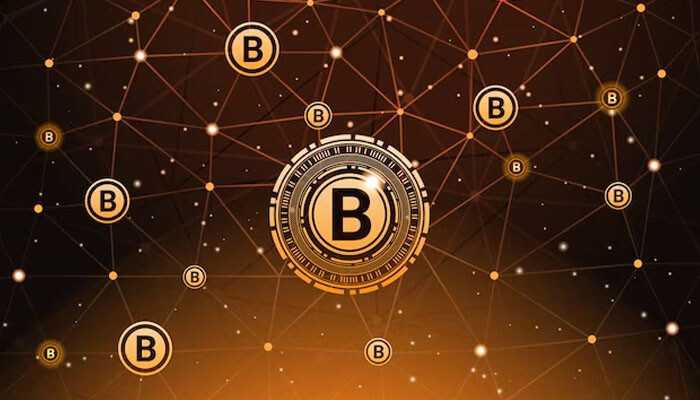Blockchain technology has revolutionized the way we think about digital assets and transactions. One of the fascinating applications of blockchain is its role in Bitcoin-Linked Coins, a concept that has gained significant attention in the world of cryptocurrencies. This service simplifies the process of buying and selling Bitcoin-Linked Coins, making it accessible to both new and experienced traders. In this article, we will delve deep into the subject of Bitcoin-linked coins, exploring their definition, significance, and the critical role that blockchain technology plays in their existence. At the same time, we will also shed light on the innovative platform known as Immediate Vortex, which enhances transaction efficiency and further contributes to the seamless experience of trading Bitcoin-Linked Coins.
Understanding Bitcoin-Linked Coins
What are Bitcoin-linked coins?
Bitcoin-linked coins, often referred to as wrapped or tokenized Bitcoins, are cryptocurrencies that are directly linked to the value of Bitcoin. These tokens are issued on other blockchain platforms, such as Ethereum or Binance Smart Chain, and are designed to represent the value of Bitcoin on those respective networks. This linkage allows users to access the benefits of Bitcoin while leveraging the features of other blockchain ecosystems.
Different Types of Bitcoin-Linked Coins
1. Wrapped Bitcoin (WBTC): WBTC is a widely known example of Bitcoin-linked coins. It is an ERC-20 token on the Ethereum blockchain, with each WBTC representing one Bitcoin. WBTC offers compatibility with Ethereum-based DeFi applications and decentralized exchanges.
2. RENBTC: RENBTC is another Bitcoin-linked coin, utilizing the RenVM protocol to bring Bitcoin’s value into the Ethereum network. RENBTC facilitates the seamless movement of Bitcoin assets within the Ethereum ecosystem.
3. tBTC: tBTC is a decentralized Bitcoin-linked coin project that enables trustless custody and issuance of Bitcoin-backed tokens on the Ethereum blockchain. It focuses on ensuring the security and transparency of the linking process.
Use Cases and Advantages
Bitcoin-linked coins offer several advantages, including increased liquidity and accessibility for Bitcoin holders in decentralized finance (DeFi) applications. Users can earn interest on their Bitcoin holdings, trade Bitcoin assets on different blockchains, and access a broader range of financial services.
The Fundamentals of Blockchain Technology
What is Blockchain?
Blockchain is a distributed ledger technology that records transactions in a transparent, secure, and immutable manner. It consists of a chain of blocks, with each block containing a set of transactions. The decentralized nature of blockchain ensures that no single entity has control over the network.
How Does Blockchain Work?
Blockchain transactions are verified by a network of nodes through consensus mechanisms, such as Proof of Work (PoW) or Proof of Stake (PoS). Once verified, transactions are added to a block, and this block is linked to the previous one, creating a chronological chain of data.
Decentralization and Security
Blockchain’s decentralization makes it highly resistant to censorship and tampering. The data stored on a blockchain is secure due to cryptographic hashing and consensus algorithms, making it extremely difficult for malicious actors to alter the information.
Consensus Mechanisms
Consensus mechanisms are critical for blockchain’s operation. In PoW, miners compete to solve complex mathematical puzzles to validate transactions, while PoS relies on validators who hold and “stake” cryptocurrency as collateral to verify transactions.
Blockchain and Bitcoin: The Inseparable Relationship
The Role of Blockchain in Bitcoin’s Creation
Blockchain technology was invented by an anonymous entity known as Satoshi Nakamoto to underpin Bitcoin. The Bitcoin blockchain serves as a public ledger that records all transactions made with Bitcoin. It ensures transparency and security while eliminating the need for a central authority.
How Bitcoin Transactions are Recorded on the Blockchain
When a Bitcoin transaction occurs, it is broadcast to the network, where miners verify and group transactions into blocks. Miners then compete to solve the PoW puzzle, with the winner adding the block to the chain. This process ensures the integrity of the Bitcoin ledger.
Transparency and Immutability in Bitcoin’s Ledger
Blockchain’s transparency allows anyone to view Bitcoin transactions in real-time, promoting trust in the system. The immutability of the blockchain prevents retroactive changes to transactions, guaranteeing the permanence of recorded data.
Bitcoin-Linked Coins in Detail
Technical Mechanisms Behind Bitcoin-Linked Coins
1. Atomic Swaps: Atomic swaps enable the trustless exchange of Bitcoin for Bitcoin-Linked Coins and vice versa. This mechanism ensures that participants in a swap receive their assets simultaneously or none at all.
2. Cross-Chain Smart Contracts: Smart contracts on different blockchains facilitate the locking and issuance of Bitcoin-linked coins. These contracts automate the process and ensure the proper linkage between assets.
Trust and Verification Processes
The trust in Bitcoin-linked coins is derived from the transparency of blockchain technology. Users can verify the existence of the collateralized Bitcoin on the respective blockchain, ensuring that the linked coins are fully backed by actual Bitcoin assets.
Smart Contracts and Oracles in Bitcoin-Linked Coins
Smart contracts govern the issuance and redemption of Bitcoin-linked coins. Oracles provide external data, such as Bitcoin’s price, to ensure that the value of the linked coin remains accurate and aligned with Bitcoin.
The Ecosystem of Bitcoin-Linked Coins
Wallets and Platforms Supporting Bitcoin-Linked Coins
Several wallets and platforms, such as MetaMask, Trust Wallet, and decentralized exchanges like Uniswap, support Bitcoin-linked coins, allowing users to store, trade, and interact with them seamlessly.
Market Dynamics and Trading of Bitcoin-Linked Coins
The trading of Bitcoin-linked coins is a growing market, with liquidity pools and trading pairs available on various decentralized exchanges. Users can explore opportunities for arbitrage and yield farming in the DeFi space.
Regulatory Considerations and Compliance
Regulation of Bitcoin-linked coins varies by jurisdiction. Some countries treat them as cryptocurrency assets, while others categorize them differently. Compliance with local regulations is crucial for participants in this ecosystem.
Future Trends and Innovations
The Evolution of Bitcoin-Linked Coins
The landscape of Bitcoin-linked coins is continually evolving, with potential innovations including increased cross-chain interoperability, enhanced security mechanisms, and greater scalability.
Potential Integration with DeFi and NFTs
Bitcoin-linked coins may find new applications in decentralized finance (DeFi) and non-fungible tokens (NFTs), expanding their use beyond their current functions.
Challenges and Opportunities Ahead
Bitcoin-linked coins face challenges related to regulatory scrutiny, security, and interoperability. However, as the blockchain space matures, these challenges may give rise to new opportunities for growth and innovation.
Conclusion
In conclusion, Bitcoin-linked coins represent a fascinating intersection of blockchain technology and the world’s most famous cryptocurrency, Bitcoin. The transparent, secure, and decentralized nature of blockchain is integral to the existence and functioning of these tokens. As the blockchain ecosystem continues to evolve, mastering the dynamics of Bitcoin-linked coins will be essential for those looking to explore the full potential of decentralized finance and digital assets. Embrace this evolving landscape, and remember that knowledge and innovation are the keys to mastering blockchain and Bitcoin-Linked Coins.




